Abstract
1. The qualitative and quantitative distribution of carotenoids of the floral parts of three monocotyledons, the narcissus Scarlet Elegance, the daffodil King Alfred and the tulip Golden Harvest, were studied. β-Carotene, lutein or epoxy-β-carotenes were usually the main pigments, depending on the floral part and on the flower. When β-carotene was the major pigment there were only small amounts of, or sometimes no, epoxycarotenes. 2. Anthers, stigmas and styles of the three flowers did not possess any specific carotenoids but in some cases contained appreciable amounts of epoxycarotenoids. The possibility that these take part in reproduction is discussed. 3. The generalization that yellow flowers contained large amounts of xanthophylls and only traces of carotenes, whereas deep-orange flowers seemed to be characterized by the presence of large amounts of one carotene, was not always the correct one. It is suggested that the floral parts are yellow or orange depending on what carotenoids are present, which is the major one and the amount of total carotenoids, and also on the presence of other non-carotenoid pigments. 4. Two new probable isomers of 5,6:5′,6′-diepoxy-β-carotene were isolated and found together in various floral parts of the tulip Golden Harvest.
Full text
PDF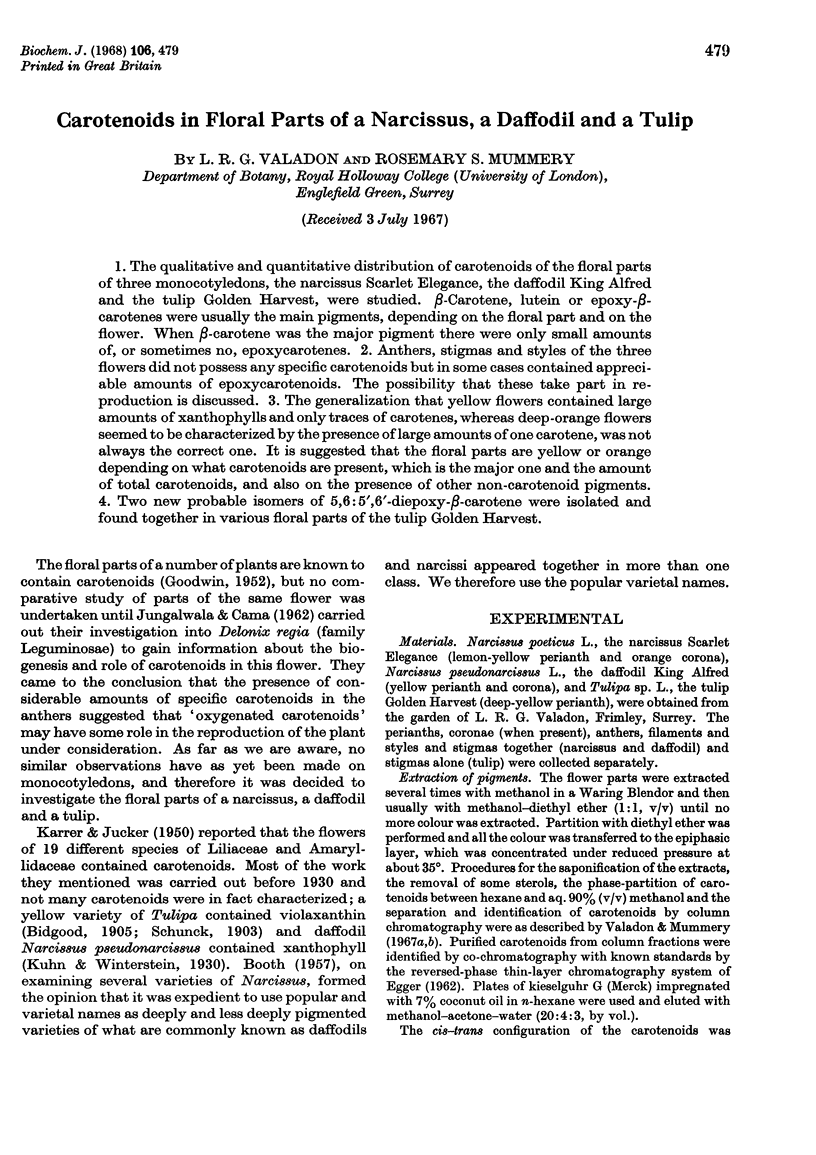
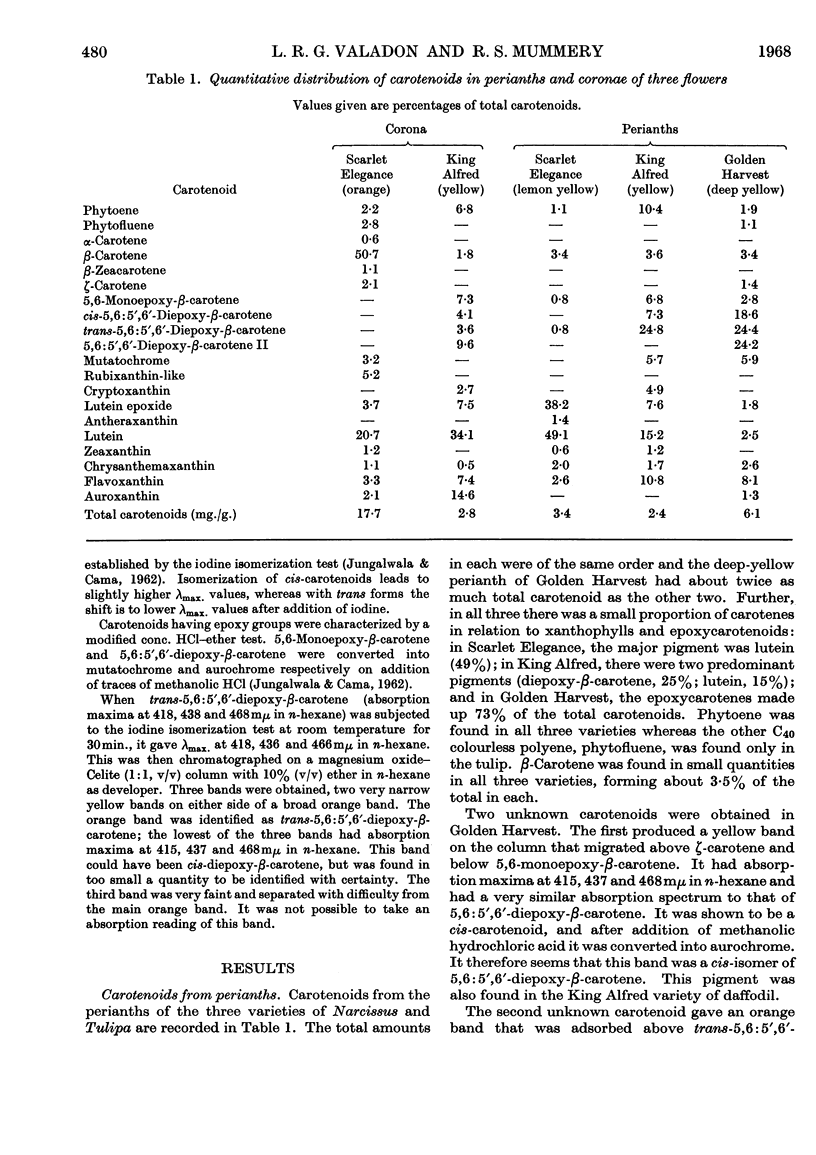
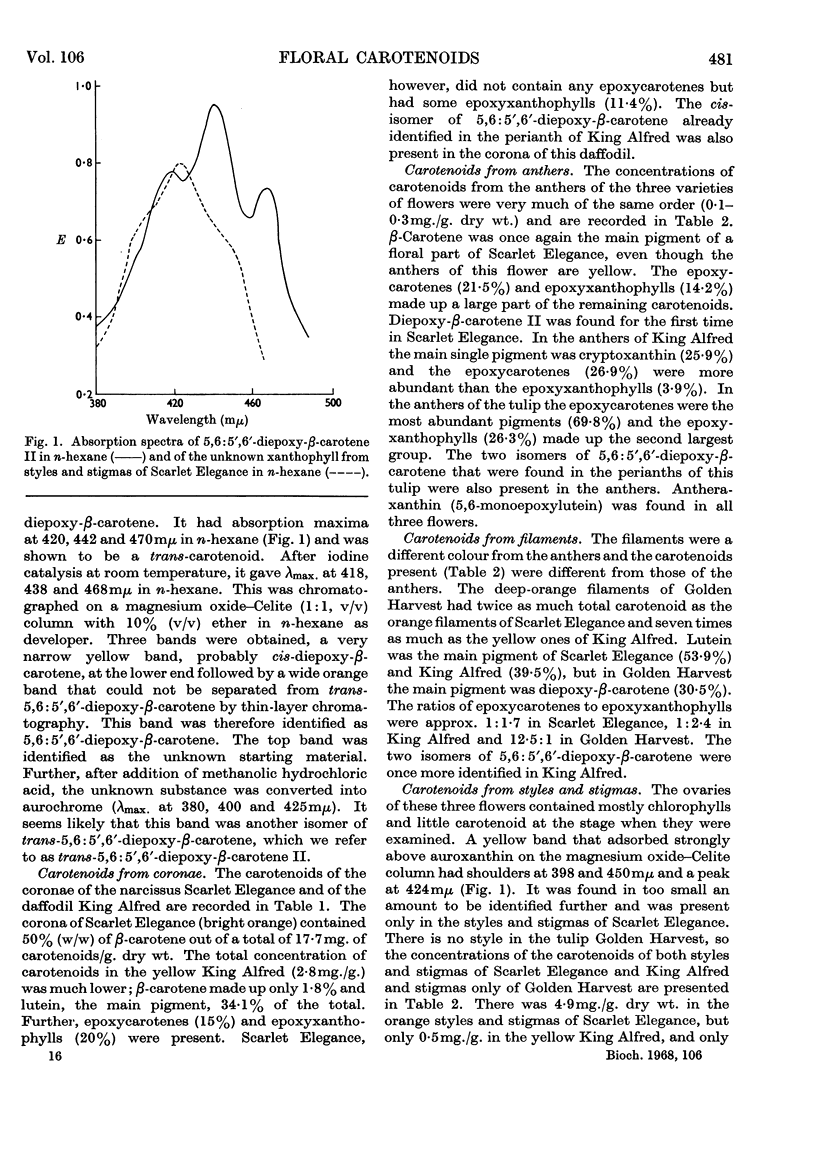

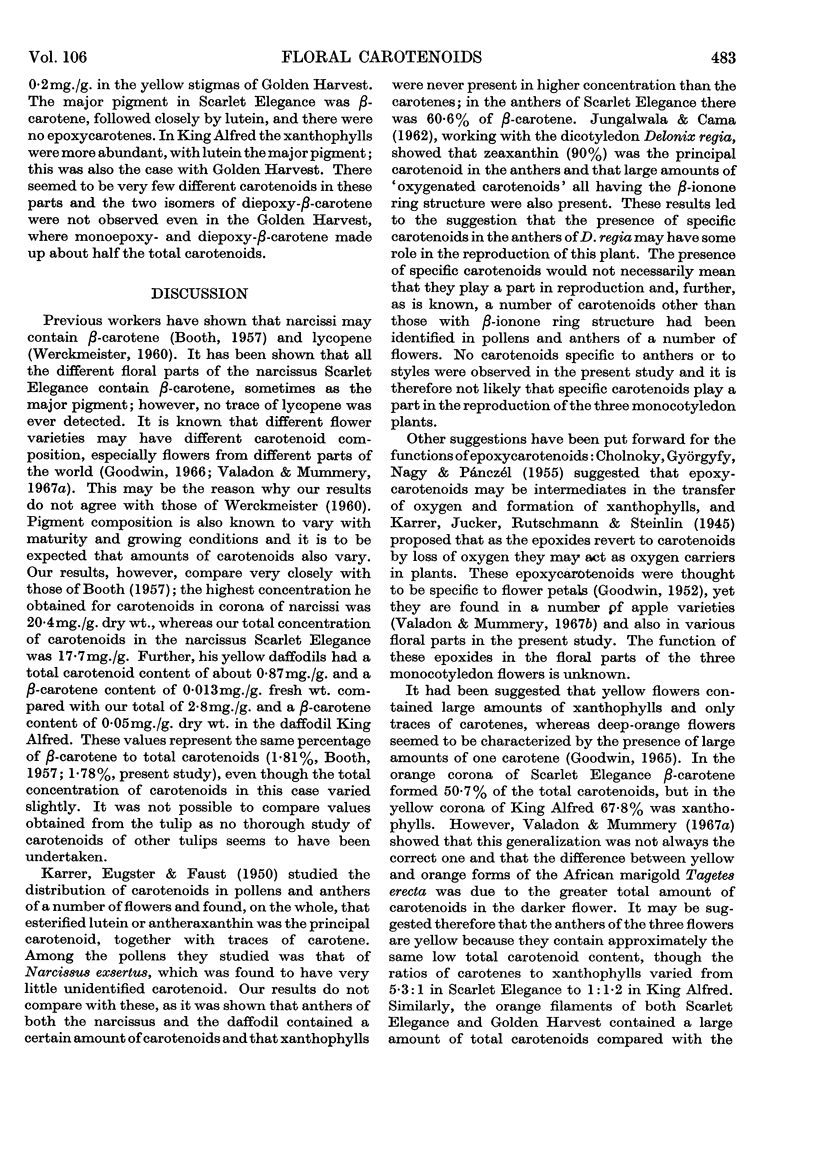
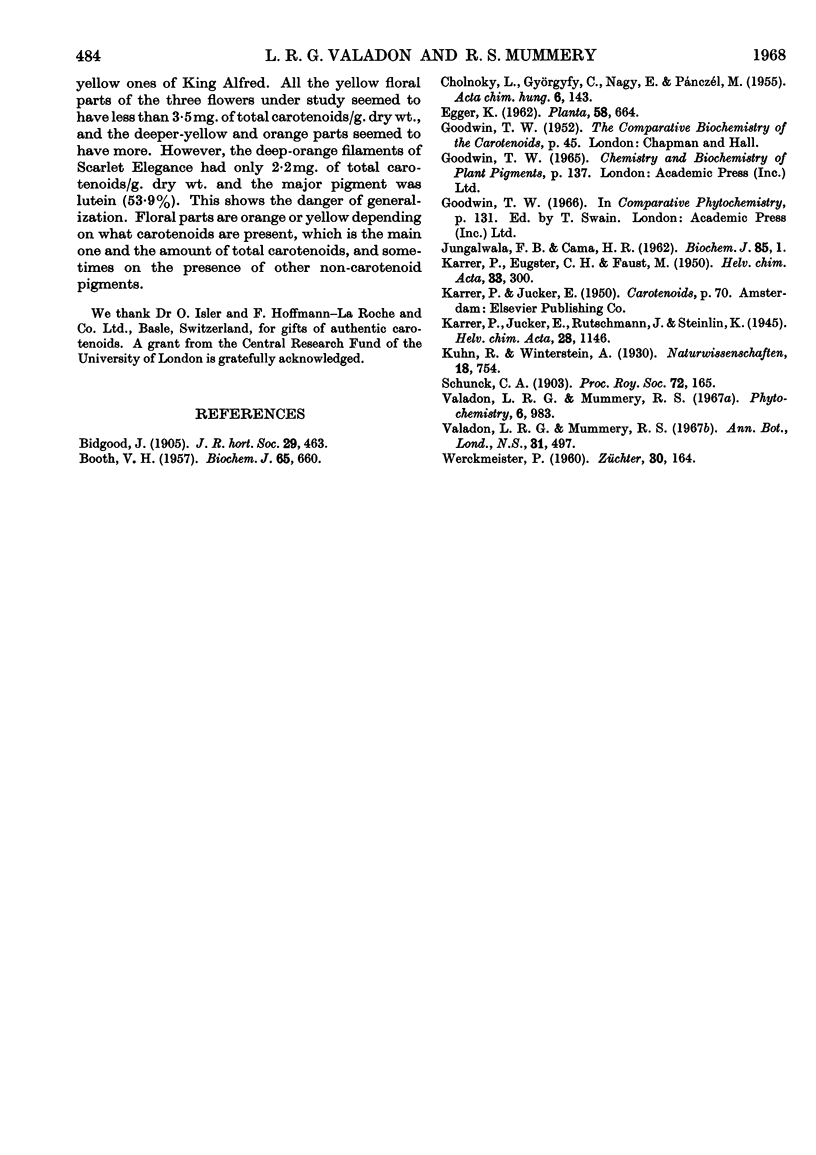
Selected References
These references are in PubMed. This may not be the complete list of references from this article.
- BOOTH V. H. Beta-Carotene in the flowers of Narcissus. Biochem J. 1957 Apr;65(4):660–663. doi: 10.1042/bj0650660. [DOI] [PMC free article] [PubMed] [Google Scholar]
- JUNGALWALA F. B., CAMA H. R. Carotenoids in Delonix regia (Gul Mohr) flower. Biochem J. 1962 Oct;85:1–8. doi: 10.1042/bj0850001. [DOI] [PMC free article] [PubMed] [Google Scholar]


